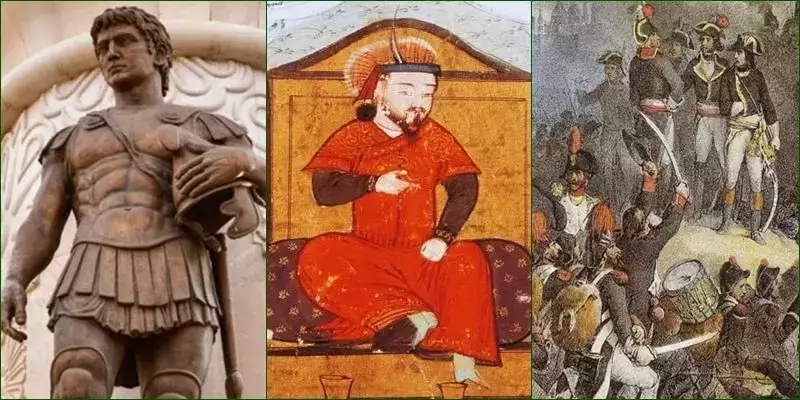Gaza’s Rich History: A Land of Battles, Prosperity, and Power Struggles
Gaza, a region with a 4,000-year-old history, stands out in a region marred by political instability and conflict. Its historical significance predates the current Israel-Arab tensions of the 20th century, making it a unique and fascinating place to explore.
Situated as a vital land bridge between Asia and Africa, Gaza has been a constant battleground throughout the centuries. The footsteps of conquerors like Alexander the Great and the Roman legions, the thundering hooves of the Crusaders, and the canter of the Mongols all resonated within its borders. Even Napoleon’s French army and the British, supported by their Indian Army contingents, left their mark on this historically significant region.
However, Gaza’s history extends beyond its role as a battlefield. It has experienced periods of prosperity and cultural influence, serving as a thriving trading hub and center of learning. The first recorded human habitation in Gaza dates back to the Bronze Age when Ancient Egypt established a fortress in the area as part of their trade with present-day Israel. Human settlements in Gaza underwent destruction and revival during this epoch, ceasing to exist by the end of the Bronze Age.
During the ancient period, Gaza played a prominent role as the Ancient Egyptians resettled the area. Its location as a significant caravan route made it a frequent site of battles between the Egyptians and their neighbors from the Fertile Crescent, particularly the Assyrians. After three centuries under Egyptian control, the Philistines settled in Gaza, giving their name to the entire area subsequently known as Palestine.
In the Old Testament, Gaza is mentioned as the place where Samson, the legendary strongman, was imprisoned and killed. The area passed through the hands of King David of Israel, the Assyrians, Ancient Persians, and Babylonians throughout the following centuries.
The momentous arrival of Alexander the Great marked a turning point for Gaza. As he marched on his path to conquer the world, Gaza became the last city to resist his expedition to Egypt. After a two-month siege, Alexander finally captured Gaza in 332 BCE. Transforming it into a hub of Hellenic learning and philosophy, Gaza continued to thrive under his successors, the Ptolemaic and Seleucid dynasties.
In 60 BC, Gaza regained prominence as the Romans captured and rebuilt the city under the rule of Pompey the Great. For six centuries under Roman control, Gaza experienced relative peace and prosperity. It served as a bustling port and trade point connecting the Middle East and Africa.
In the 6th century, Gaza faced its first major upheaval as armies emerged from the Arabian desert to spread Islam. Its significance to Muslims was enhanced by several visits from Prophet Mohammad during his years as a trader. Gaza was besieged by the Arab army, eventually falling under their control. However, contrary to the violent conquests at the time, the city’s inhabitants were spared.
For the next few centuries, Gaza enjoyed periods of peace under various regional Islamic dynasties. However, its political and economic significance gradually declined.
During the First Crusade in 1100, Gaza was wrested from the Fatimids and remained under Christian rule for almost two centuries until Saladin’s attack in 1170. Saladin eventually conquered Gaza in 1187 but lost it temporarily during the Third Crusade. The fortifications of Gaza were demolished during this time.
In the 13th century, Hulagu Khan’s Mongol hordes ravaged Palestine, including the destruction of Gaza. However, the Mongols’ subsequent withdrawal enabled the Mamluks to recapture the area, paving the way for the end of Christian kingdoms in Palestine.
Under Mamluk rule, Gaza initially thrived but later declined. When the Ottomans took control in 1516, the city was impoverished, and its port and trade suffered. The next significant event occurred in 1799 when Napoleon briefly occupied Gaza during his Egyptian expedition, dubbing it “the outpost of Africa, the door to Asia.”
In the early 20th century, Gaza became a battleground once again during the First World War. British forces from Egypt clashed with the Ottomans, resulting in the famous battles of Gaza. While the British initially faced defeat, they ultimately succeeded in the Third Battle of Gaza in 1917. These events are portrayed in the film “The Light Horsemen.”
Under the British mandate of Palestine, Gaza remained restive, leading to the expulsion of its Jewish residents during the 1929 riots. After the 1948 Arab-Israeli war, Gaza came under Egyptian control until it was captured by Israel in 1967. Subsequent decades witnessed insurgencies, Israeli blockades, and assaults in 2008-2009, 2012, and 2014.
As Gaza faces ongoing challenges, one wonders if the Israelis will invade again, adding another chapter to its tumultuous history. Despite the hardships, Gaza’s enduring legacy as a significant historical and cultural hub remains intact.

I have over 10 years of experience in the cryptocurrency industry and I have been on the list of the top authors on LinkedIn for the past 5 years. I have a wealth of knowledge to share with my readers, and my goal is to help them navigate the ever-changing world of cryptocurrencies.











